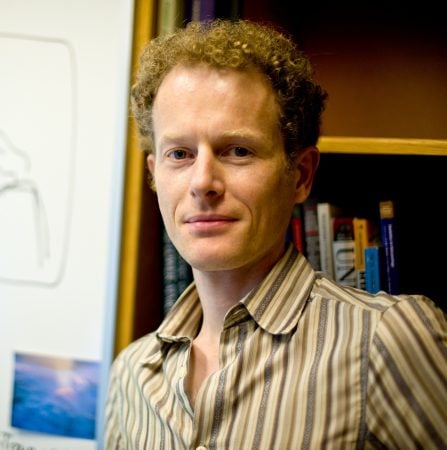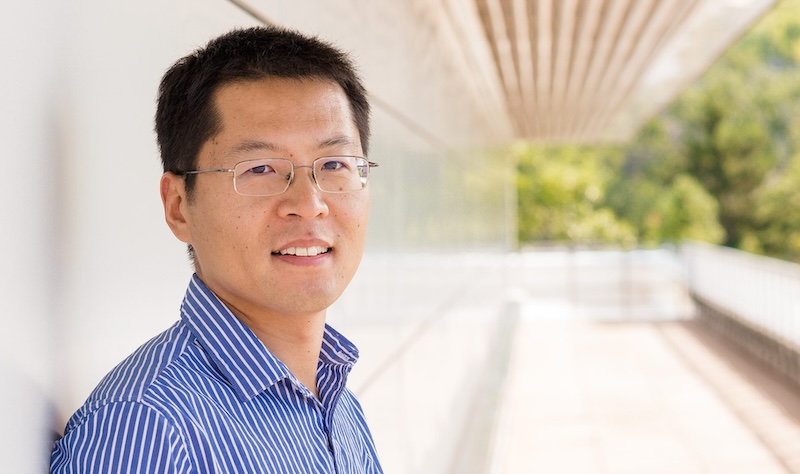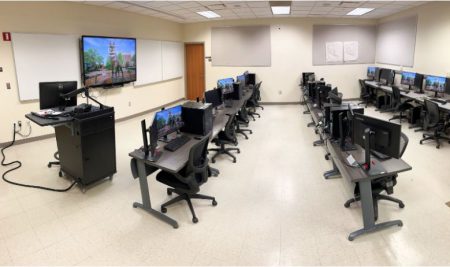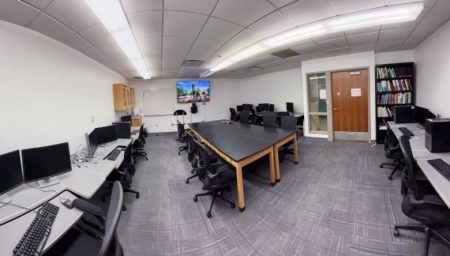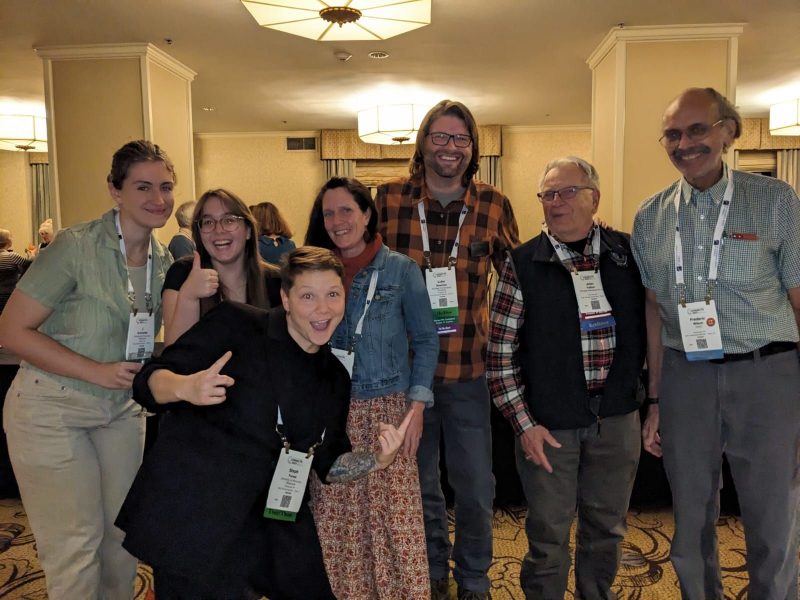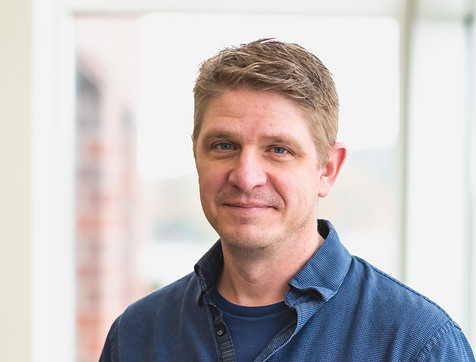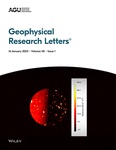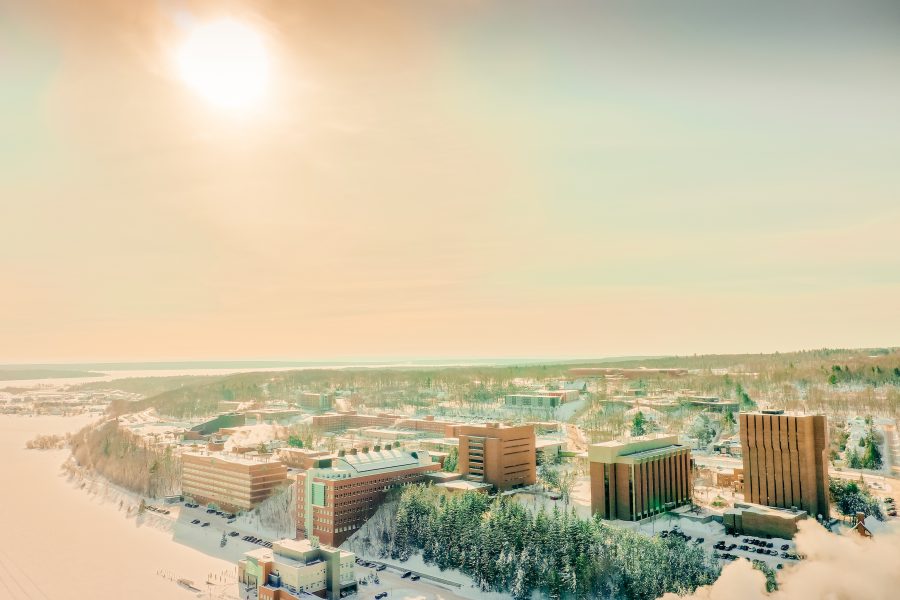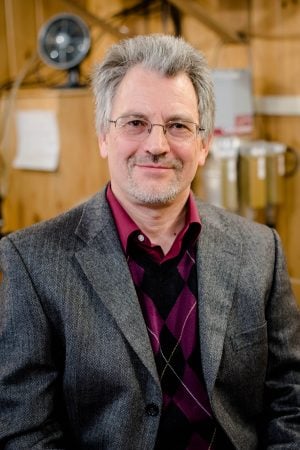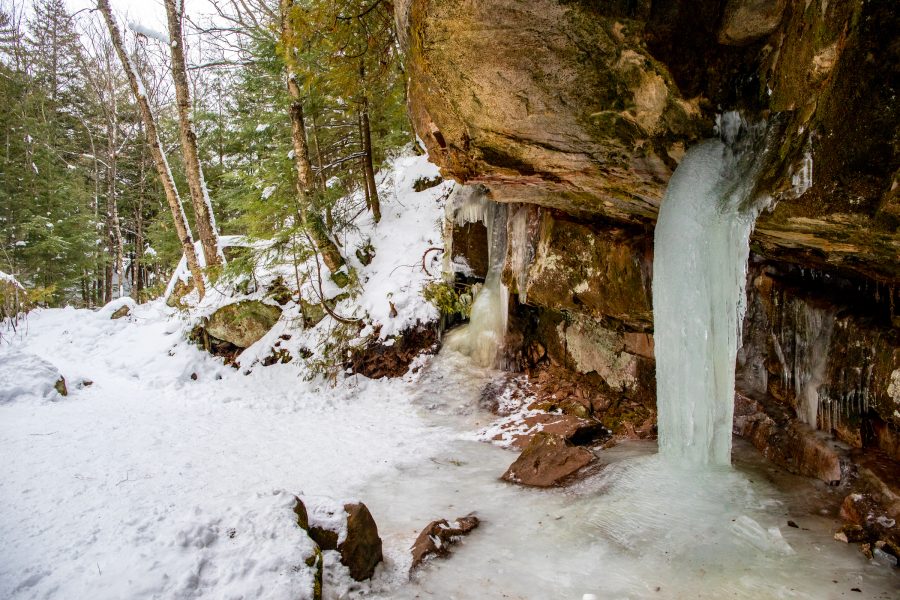In a stunning display of ‘when it rains, it pours,’ Dr. Simon Carn, a Professor at the Department of GMES, has bagged two prestigious awards within a month—a feat as rare as spotting a double rainbow. On April 5, Dr. Carn was honored with the Michigan Tech Research Award, recognizing his outstanding achievements in research. Just weeks later, on April 18, he was bestowed the title of Distinguished Professor, an accolade awarded to faculty members who have made substantial contributions to the University and their discipline.
Dr. Carn has made seminal contributions to both applied and fundamental aspects of volcanology, remote sensing, and meteorology. Recognized as a world authority on multi-sensor remote sensing of volcanic clouds, he uniquely blends advanced knowledge of remote sensing, volcanology, and atmospheric science. His research is noted for its innovation, collaborative spirit, and versatility, focusing on employing remote sensing data in studies of volcanic degassing, eruption clouds, and anthropogenic pollution. Dr. Carn excels in translating theoretical understanding into practical solutions, significantly impacting volcanic hazard prediction and mitigation and enhancing aviation safety. This blend of academic and practical prowess has earned him broad international recognition, including the American Meteorological Society Special Award and the NASA/US DOI William T. Pecora Award.
Dr. Carn has secured substantial external funding to support his research, with contributions from prestigious agencies such as NASA, NSF, and NOAA, underscoring the scientific community’s strong confidence in his work. His external expenditure ranks among the highest at MTU. His scholarly output is both prolific and collaborative, featuring 133 peer-reviewed publications and book chapters, many co-authored with his students. He is also among the most cited researchers at the university.
An inspiring mentor and instructor, Dr. Carn has guided four postdoctoral researchers, 22 PhD and 36 MS students. He led our successful dual International Master in Geology (INVOGE) program from 2009 to 2015 in collaboration with Université Blaise Pascal, the University of Buffalo, and the University of Milan Bicocca. His students have found employment in the public, government, and academia worldwide.
Dr. Carn has made significant contributions to his professional community, serving as an Associate Editor for the Journal of Geophysical Research and as Secretary of the Remote Sensing Commission of the International Association of Volcanology and Chemistry of the Earth’s Interior (IAVCEI) since 2008. Additionally, he has been a member of the National Academy of Sciences Committee on Improving Understanding of Volcanic Eruptions, the AAAS Review Committee for the U.S. Geological Survey Volcanic Hazards Program, and various scientific committees for international conferences and workshops.
Importantly, Dr. Carn has been very active and efficient in outreach and promotion of science. He is a frequent and long-term contributor to NASA’s Earth Observatory educational website and other outlets such as Scientific American and National Geographic. He conducted TV, radio, and newspaper interviews with BBC World Service, The Weather Channel, Wall Street Journal, Weather Underground, and others. Finally, he has actively promoted his research on X (formerly Twitter) with more than 7000 followers as of today.
Congratulations, Simon, on these well-deserved awards!
Shiliang Wu (GMES/CEGE) was quoted by Planet Detroit in a story explaining how a winter atmospheric inversion lowered air quality January 7-8, 2024, in Detroit. Wu co-authored a 2016 study that found a 50% increase over the last 60 years in the frequency of winter atmospheric inversions and summer heatwaves, which can both increase air pollution. The story was picked up by Great Lakes Now.
“For the last at least 60 years we have data for, we can clearly see a trend of increasing temperature inversions in mid-latitude regions.”
Wu is a dual-appointment professor in Geological and Mining Engineering and Sciences and Civil, Environmental, and Geospatial Engineering. His research involves impacts of global change on atmospheric chemistry and long-range transport of air pollution.
Two laboratories at the Department of GMES underwent significant renovations this past summer
1. Upgrading the Mine Design and System Simulation Laboratory
Thanks to the generous support of our Mining Engineering alumni, we replaced all the computers in our Mine Design and System Simulation Laboratory (Dow 709) with new cutting-edge, powerful computers with advanced mine design, planning, and simulation software packages. At the same time, the laboratory capacity was increased to 15 seats. The MDSS Laboratory supports teaching, senior design, and research activities. The lab is fully equipped with the Sharp AQUOS BOARD Interactive Display System, and advanced audio-video equipment. This lab also includes a smart interactive center room for video conferences and online communications. The MDSS Lab is created to enhance and facilitate the potential of teaching and conducting modern mining projects at Michigan Tech. This upgrade will further enhance collaboration and foster innovation among our students and researchers.
2. Introducing the Earth Explorers Computer Laboratory: A Multifunctional Hub
We converted the old seismic petrophysics laboratory into the dynamic Earth Explorers Computer Laboratory (EECL). It is a multifunctional space tailored for GMES students tailored for GMES students pursuing their research, coursework, and senior projects. Designed to foster creativity and collaboration, the laboratory is equipped with several high-performance workstations featuring AppsAnywhere technology and proprietary software. Students have access to many specialized applications, data processing tools, modeling software applications, and image processing. The computers in EECL also provide access to Michigan Tech’s high-performance computing cluster. This dynamic space now features a spacious TV screen, a lectern, and video-conferencing equipment and serves as a geophysics reference library. Additionally, the lab serves as a multi-purpose space, doubling as a classroom for various GMES courses as well as a meeting space for research groups. The room’s ambiance was revitalized with brand-new carpeting and fresh paint, giving it an inviting vibe.
These upgrades enhance the learning and collaboration experience within our department. They ensure more students can access our resources, and provide modern, adaptable spaces for educational and collaborative needs for everyone.
Our heartfelt thanks go to our alumni whose generous donations made these improvements possible. As we embrace the future of learning and research, we are excited about the possibilities these upgrades will bring.
Assistant Teaching Professor Luke Bowman (GMES, PhD ‘15) and Research Scientist Erika Vye (GLRC/GMES, PhD ‘16) represented Michigan Tech at the Geological Society of America’s annual meeting in Pittsburgh, PA, October 14-18, 2023. They participated in a session titled “Field-Based Geoscience Education: Advances in Research, Program Evaluation, Pedagogy, and Curriculum”.
Bowman shared an oral presentation titled “Community Involvement in Building and Testing A Flash-Flood Model for Simulating Flood Frequency” (with co-authors Natalea Cohen (GMES, MS ‘23), John Gierke, Vanessa Bailey, Hannah Lukasik, Shannon McAvoy, Mario Hugo Mendez, Susan Toivonen, and David Yates).
This research, which involves several MTU researchers and students, is part of a multi-year project that addresses climate change-induced, water-related challenges in the Central American Dry Corridor, focusing on agricultural community adaptations to extreme hydrometeorological events in El Salvador. This project is a collaboration of Michigan Technological University (MTU), CUAHSI, and Lutheran World Relief (LWR) in El Salvador, funded as a National Science Foundation International Research Experience for Students (IRES).
Geological Society of America Abstracts with Programs. Vol. 55, No. 6, 2023
doi: 10.1130/abs/2023AM-394917
Bowman also participated in a workshop on Positive Mental Health in the Geosciences sponsored by GSA and the Science Education Resource Center (SERC). The workshop shed light on the challenges experienced by many geoscientists, explored the common signs that indicate when geoscientists are struggling with their mental health, and showcased best practices to create a safe and supportive working environment.
Vye shared an oral presentation titled “The Keweenaw Geoheritage Summer Internship: Exploring Our Shared Relationships with Land and Water” (with co-author Amanda Gonczi).
Geological Society of America Abstracts with Programs. Vol. 55, No. 6, 2023
doi: 10.1130/abs/2023AM-395861
Vye also supported and co-authored two first-time student presentations in a session titled “The Stories of Geoheritage”: “Connecting Geology, Mining, & Fish Sovereignty in the Keweenaw” by Naomi Smith (Keweenaw Bay Ojibwa Community College),” and “Bridging Knowledges – Using Geospatial Technology to Support Place-Based Geoheritage Learning” by Steph Fones (University of Wisconsin-Milwaukee) with co-authors Daniel Lizzadro-McPherson and Naomi Smith. Fones and Smith participated in an 8-week Keweenaw Geoheritage internship at Michigan Tech in the summer of 2023. This work was supported by NSF Award # 2136139 – EAGER: Geoheritage and Two-Eyed Seeing – Advances in Interdisciplinary Earth Science Research, Learning, and Inclusion through Shared Ways of Knowing (PI Vye).
Geological Society of America Abstracts with Programs. Vol. 55, No. 6, 2023
doi: 10.1130/abs/2023AM-395218
Geological Society of America Abstracts with Programs. Vol. 55, No. 6, 2023
doi: 10.1130/abs/2023AM-395408
The Department of GMES also co-sponsored the Michigan Colleges/Universities Joint Alumni Reception at the GSA conference (together with Grand Valley State University, Western Michigan University, Hope College, Wayne State University, Eastern Michigan University, Albion College, and Central Michigan University). It was good to see and chat with our alumni, colleagues, and friends. This gathering was a testament to the enduring camaraderie within our geoscience community.
Chad Deering, an associate professor in the Department of Geological and Mining Engineering and Sciences, has joined the Michigan Tech Academy of Teaching Excellence.
“Dr. Deering is an exceptional educator, teaching vital departmental courses such as mineralogy, petrology, geochemistry, and summer field geology,” says GMES Department Chair, Aleksey Smirnov. His extensive knowledge in these fields and engaging teaching style have earned him high praise from students.”
“His recent recognition for teaching excellence is a testament to his dedication and the impact he has on our undergraduate students.”
“Dr. Deering strikes a balance between being demanding and fair, challenging students while providing a supportive learning environment.”
The Michigan Tech Academy of Teaching Excellence was established in 1998 to recognize those who have demonstrated continued dedication to and support of the University’s teaching mission. Academy membership is comprised of finalists for the annual Distinguished Teaching Awards and the Fredrick D. Williams Instructional Innovation Award.
Deering was nominated for the William G. Jackson Center for Teaching and Learning (CTL)’s annual Distinguished Teaching Awards, which recognize outstanding contributions to Michigan Tech’s instructional mission. Based on more than 40,000 student ratings of instruction responses. He was among 10 finalists in the Associate Professor/Professor category identified for the 2023 awards.
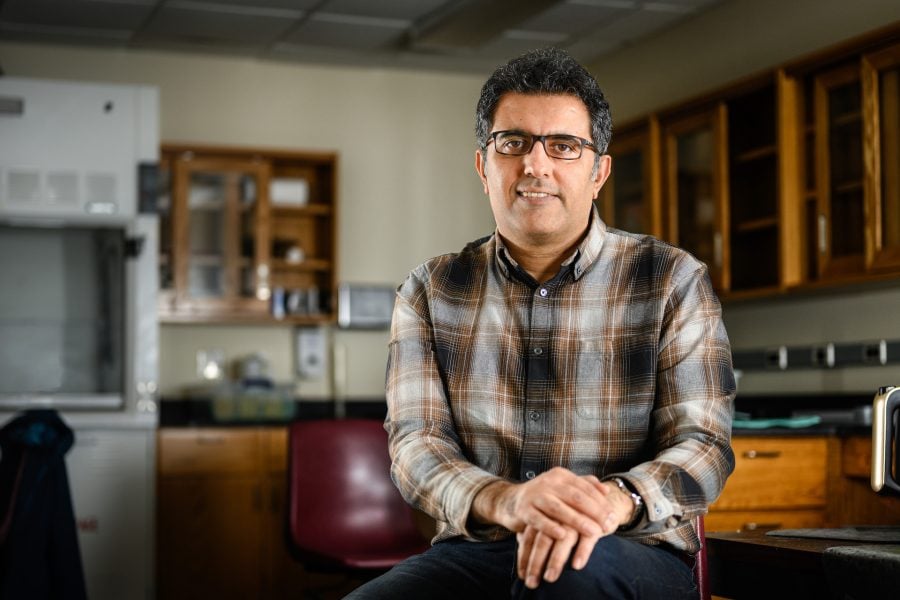
GMES Associate Professor Radwin Askari, a geophysicist who studies cavitation in volcanoes’ fluid-filled magmatic cracks, has earned a National Science Foundation (NSF) CAREER Award.
The awards recognize Askari, an associate professor of geological and mining engineering and sciences, as an early-career faculty who demonstrates the potential to serve as academic role model in research and education, and to lead advances in the mission of his department or organization. The five-year grant will support both research work and education outreach.
Askari’s award will enhance both research capabilities and educational opportunities in the Physical Modeling Laboratory.
Understanding Volcanoes Through Integrated Physical Modeling
Askari will receive more than $668,000 to continue research in the Physical Modeling Laboratory (PML), which he founded in the Department of Geological and Mining Engineering and Sciences (GMES). For his CAREER project, he’ll develop two analog apparatuses to investigate the cavitation mechanism in fluid-filled magmatic cracks and the developments of sub-cracks and seismic signals that result. Askari said it is crucial to understand both the cavitation mechanism and the dynamics of a volcano’s magmatic crack growth in order to estimate the scale of magma transport.
“The results from this research can improve the forecast of volcanic eruptions, which in turn can help to mitigate their consequent hazards.”
As a result, Askari will be able to assess other complex scenarios in fracture evolution and their corresponding seismicity, a major step toward his ultimate research goals in the field. He also plans to purchase new lab equipment, including a high-speed imaging system, to substantially enhance the PML’s experimental capacities. Other disciplines across campus, including biomechanics, aerodynamics and fluid dynamics, will also be able to use these advanced tools for future multidisciplinary research collaborations.
Askari plans to promote earth science literacy for students, educators and the public by producing several educational videos and a virtual PML lab tour. He will also offer summer research internships to students from traditionally underserved populations.
Askari said he’s grateful to GMES Chair Aleksey Smirnov, along with Assistant Vice President for Research Development Peter Larsen and colleagues in Tech’s Sponsored Programs Office, for their support and guidance. He also thanked retired GMES staff member Carol Asiala, an assistant research scientist and engineer, for her assistance with the nontechnical parts of his award proposal.
Learn more about the Physical Modeling Laboratory.
An international team which includes Simon Carn analyzed layers of an ice core from central Greenland to calculate levels of sulfate aerosols between the years 1200 and 1850. They discovered that non-erupting volcanoes leak sulfur at up to three times the rate previously believed.
https://doi.org/10.1029/2022GL102061
The discovery impacts efforts to model past, present, and future climate.
“We found that on longer timescales the amount of sulfate aerosols released during passive degassing is much higher than during eruptions,” said first author Ursula Jongebloed, a UW doctoral student in atmospheric sciences. “Passive degassing releases at least 10 times more sulfur into the atmosphere, on decadal timescales, than eruptions, and it could be as much as 30 times more.”
Read more at UW News, by Hannah Hickey.
Related
- U. A. Jongebloed et al, Underestimated Passive Volcanic Sulfur Degassing Implies Overestimated Anthropogenic Aerosol Forcing, Geophysical Research Letters (2023). DOI: 10.1029/2022GL102061
- Climate Models Underestimate Passive Volcanic Sulfur Emissions
The William G. Jackson Center for Teaching and Learning (CTL) is seeking input for its annual Distinguished Teaching Awards, which recognize outstanding contributions to Michigan Tech’s instructional mission. Based on more than 40,000 student ratings of instruction responses, 10 finalists have been identified for the 2023 awards. The selection committee is soliciting comments from students, staff, faculty and alumni to be referenced during their deliberations.
Among the Associate Professor/Professor finalists is Chad Deering, who is an associate professor in the Department of Geological and Mining Engineering and Sciences.
Comments for the finalists are due by March 31 and can be submitted online.
The process for determining the Distinguished Teaching Award recipients from this list of finalists also involves the additional surveying of their spring 2023 classes. The selection committee makes the final determination of the award recipients. The 2023 Distinguished Teaching Awards will be formally announced in May.
For more information, contact the CTL at ctl@mtu.edu or 906-487-3000.
Dear Friends, Colleagues, and Alumni,
Greetings from the Department of Geological and Mining Engineering and Sciences at Michigan Tech! I hope that this newsletter finds you well and in good spirits.
The second half of the year 2022 has brought our Department new challenges, but also achievements and successes.
First and foremost, I am proud to report that, after some hiatus, we inducted eight (!) new members to our Academy of Geological and Mining Engineers and Scientists. I hope you will join me in congratulating David Adler ‘82, Daniel Farrell ’60, Mary Herrmann-Foley ’83, Terre Lane ’82, Julie (Varichak) Marinucci ’02, Richard Saccany ’71, Brian Schwanitz ’77, and Todd Stone ’85! The Induction Ceremony, held on October 14, was a success and well-attended. In particular, we were happy to see the current academy members Catherine Aimone-Martin, Suzanne Beske-Diehl and Jimmy Diehl, William Brice, Karl Burgher, Gerald Carlson, Richard Gray, Catherine Dummer McRae, and Bill Rose. The festivities continued the next day with a Director’s Tour of the Mineral Museum and apple pressing at Professor John Gierke’s farm. Everyone had a good time. I would like to praise Brittany Buschell, our Department Coordinator, whose diligent work was instrumental in the success of this event. I intend to preserve the biennial cycle of the Academy from now on.
The success of our department is ultimately measured by the success of our students, and it is no secret that we’ve been blessed with more than our fair share of capable, dedicated, enthusiastic individuals who’ve been very successful in their classes and professional development. Just to give you a small sampling of these successes—our student chapter of the American Institute of Professional Geologists won the nationwide Student Chapter of the Year Award, not just one time, but three times in a row! Our mining engineering senior, Jake Maxon won the highly prestigious national Lord Bagri Scholarship Award from the Copper Club. It’s the second time in a row the award goes to our students.
In addition, our geology majors, Elliz McClelland and Samuel Johnson received the DeCleene Memorial Scholarship awarded by the Copper Country Rock and Mineral Club (CCRMC). Our graduate students get awards, too. For example, Beth Bartel was awarded the Outstanding Teaching Assistant Award from the National Association of Geoscience Teachers (NAGT) and the prestigious Smithsonian Institute Fellowship. Beth was also featured in the book, Quake Chasers: 15 Women Rocking Earthquake Science—check it out!
Increasing undergraduate and graduate enrollment to full capacity is one challenge that remains. We have been active in our recruitment efforts. We recently developed an articulation agreement with the Northwestern Michigan College (NMC) for our Geology and Applied Geophysics programs. We plan to complete similar agreements for our Geological Engineering and Mining Engineering degree programs soon. I am especially grateful to Luke Bowman, research professor and recruitment director, for his meticulous and efficient work in developing these initiatives. So far we have been able to withstand national enrollment trends, even slightly increasing our numbers this year. But much more remains to be done.
We are dedicated to providing students with the greatest possible opportunity to succeed—something we can only do with the best faculty, staff, equipment, facilities, and scholarship opportunities. Your generosity makes our goal of providing truly excellent undergraduate and graduate experiences a reality, as we educate the scientists and engineers of the future, while still meeting the needs of today’s employers.
We especially need your help to support incoming and current students. This can be done in a variety of ways: funding undergraduate scholarships and graduate fellowships; helping us to incorporate modern instrumentation and software in the classroom and field; developing new opportunities for the professional development of our students; and extending our efforts to offer a cutting-edge, quantitative, digital-age curriculum. You can find more information here, or contact me via email, at asmirnov@mtu.edu.
On behalf of all of our students, faculty, and staff, I want to express our deepest gratitude to those of you who have provided support to our department, by sharing your experience and expertise, providing professional opportunities to our students, or offering monetary and logistical support. As always, we welcome all new ideas and inquiries, so please don’t hesitate to get in touch.
Alumni and friends are always welcome in person, too! Feel free to stop by the department office (room 630) on the 6th floor of the Dow Building whenever you are in Houghton. We would be very pleased to meet with you and arrange a tour of the teaching and research laboratories during your visit. Meanwhile, I invite you to stay connected to the department via Instagram, Facebook, Twitter, and our website.
Wishing you a happy and healthy holiday season!
Aleksey Smirnov
Professor and Chair
Department of Geological and Mining Engineering and Sciences
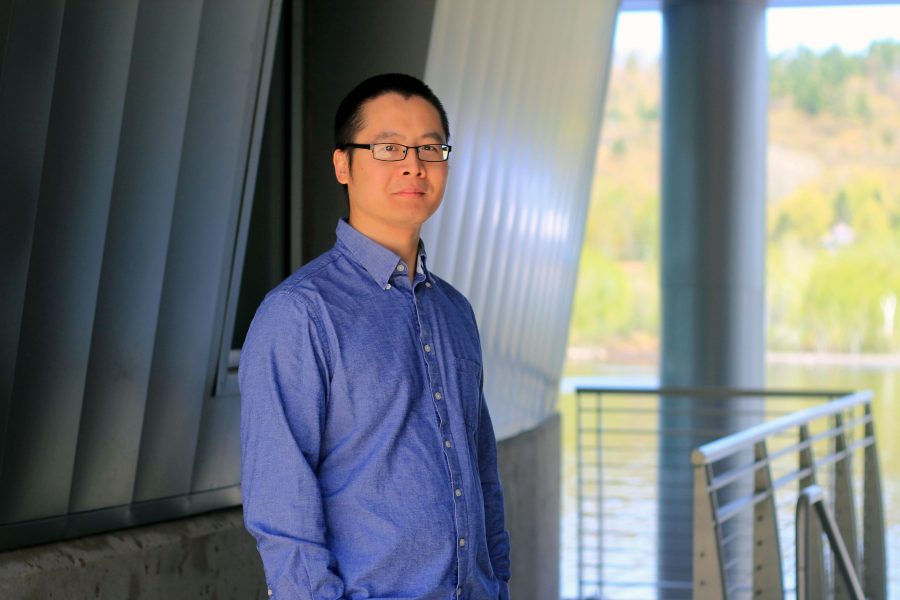
GMES Assistant Professor Xin Xi’s new open-source dataset, duISD, is featured in Michigan Tech’s Unscripted Research blog. Here, he tells us more about it.
Q: How did you get started studying dust and desertification?
XX: I grew up in humid southern China and had no experiences with dust storms when I was young. When I started college in Beijing, I had personal encounters with the “yellow dust” or Kosa (in Korea and Japan). The sky turned murky yellow every spring, while the whole city was shrouded in a cloud of dust blown from northwestern China.
When I started graduate school at Georgia Tech, atmospheric aerosols emerged as a central theme in climate research, largely because they are capable of counteracting the warming effect of greenhouse gasses and play a crucial role in the hydrological cycle. Like many others, I became interested in my research due to the positive influence of my Ph.D. advisor, an expert in atmospheric aerosols, particularly mineral dust.
Q: Why did you decide to revisit the use of horizontal visibility?
XX: Primarily because of the long timespan of the visibility record from surface weather stations. It is by far the longest instrumental data record of dust, including regions near the dust source where modern-day satellites have difficulties providing reliable observations.
Long-term, uninterrupted data records are paramount for understanding the variability of dust in response to climate and land use changes. I believe the visibility record has not been used to its full potential, so I took on the effort to develop a homogenized dust-climate record.
Q: Who do you imagine will get the most use from your new dataset? How would a researcher make use of it, and why?
XX: This new dataset is an initial version of the dust-climate dataset I have been working on. Currently it consists of monthly records of the ambient dust burden at more than 10,000 weather stations worldwide. It is presented in an easy-to-read format, so anyone familiar with spreadsheets can use it. Dust researchers may find it useful, because they can avoid the tedious preprocessing steps with the raw data and are presented with summary statistics to help them pick the stations for their region of interest.
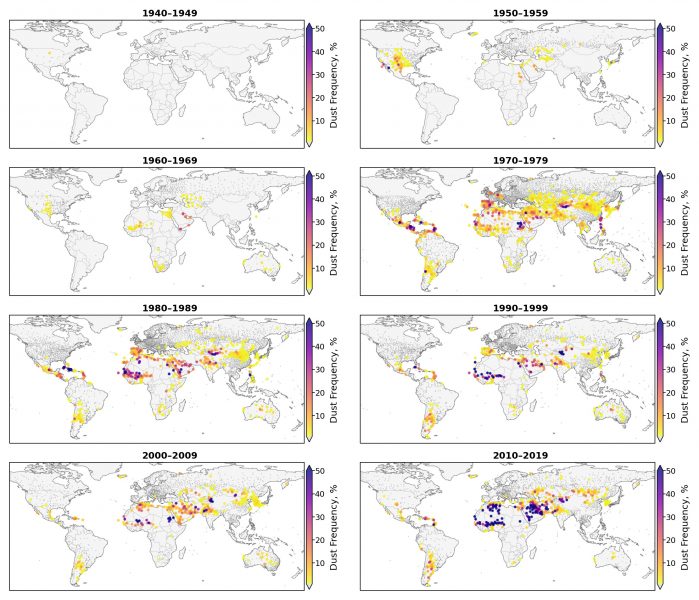
Q: Do you intend to update with future versions?
XX: Definitely. I plan to conduct data fusion by combining the surface observations with additional climate and land information from satellites or models.
Q: What are the most unique and noteworthy aspects of this research?
XX: It is a climate data record development project, and the ultimate goal is to create a quality-controlled dataset for the climate community to study trends, variability and relationships about dust and climate. In addition, I believe the dataset can offer other insightful information about the deficiency of current climate models.
Q: What do you plan to research next?
XX: I plan to take on the next step of updating the initial dataset I created, and develop new analytic results, which can convince myself — and, hopefully, the climate community — that surface weather observations are worth a refreshed look and can be used for improving our dust-climate modeling capability.
Xi’s open-source dataset, duISD, can be accessed online.
